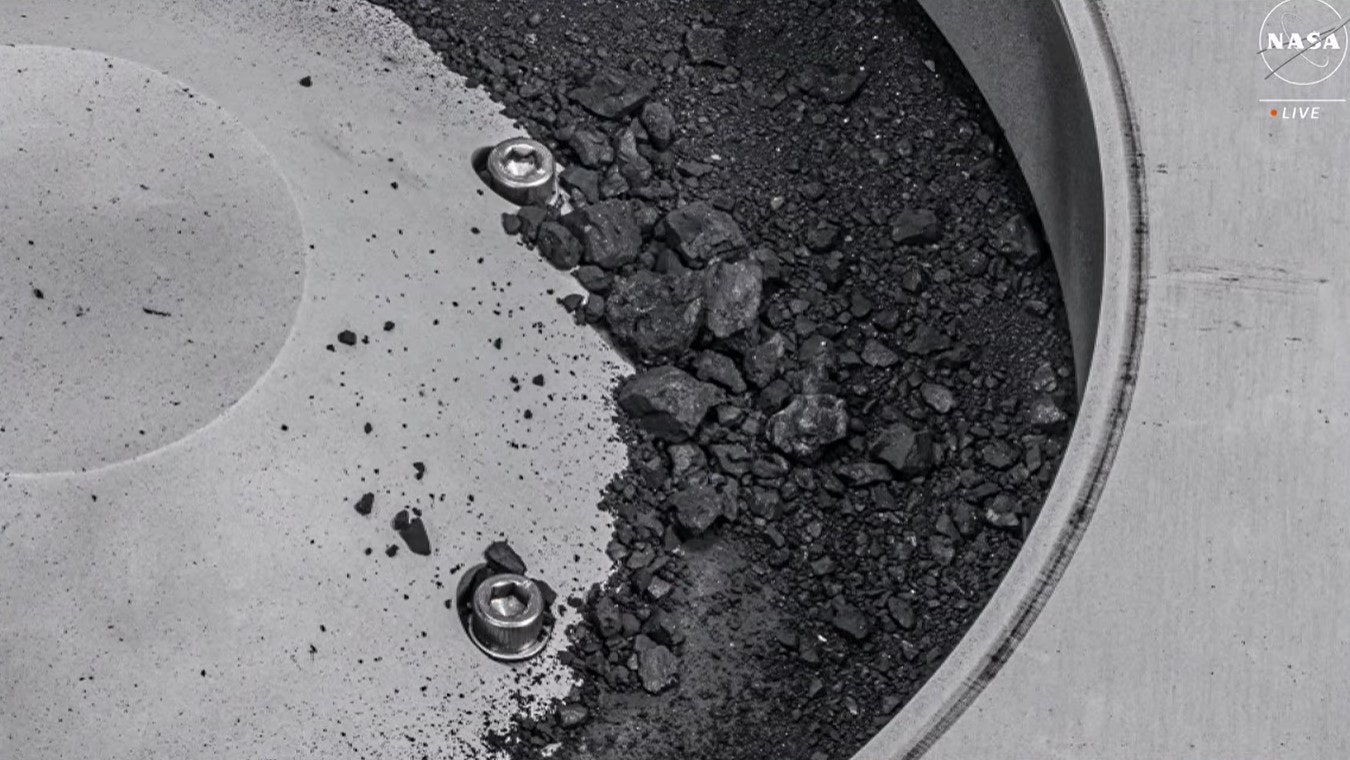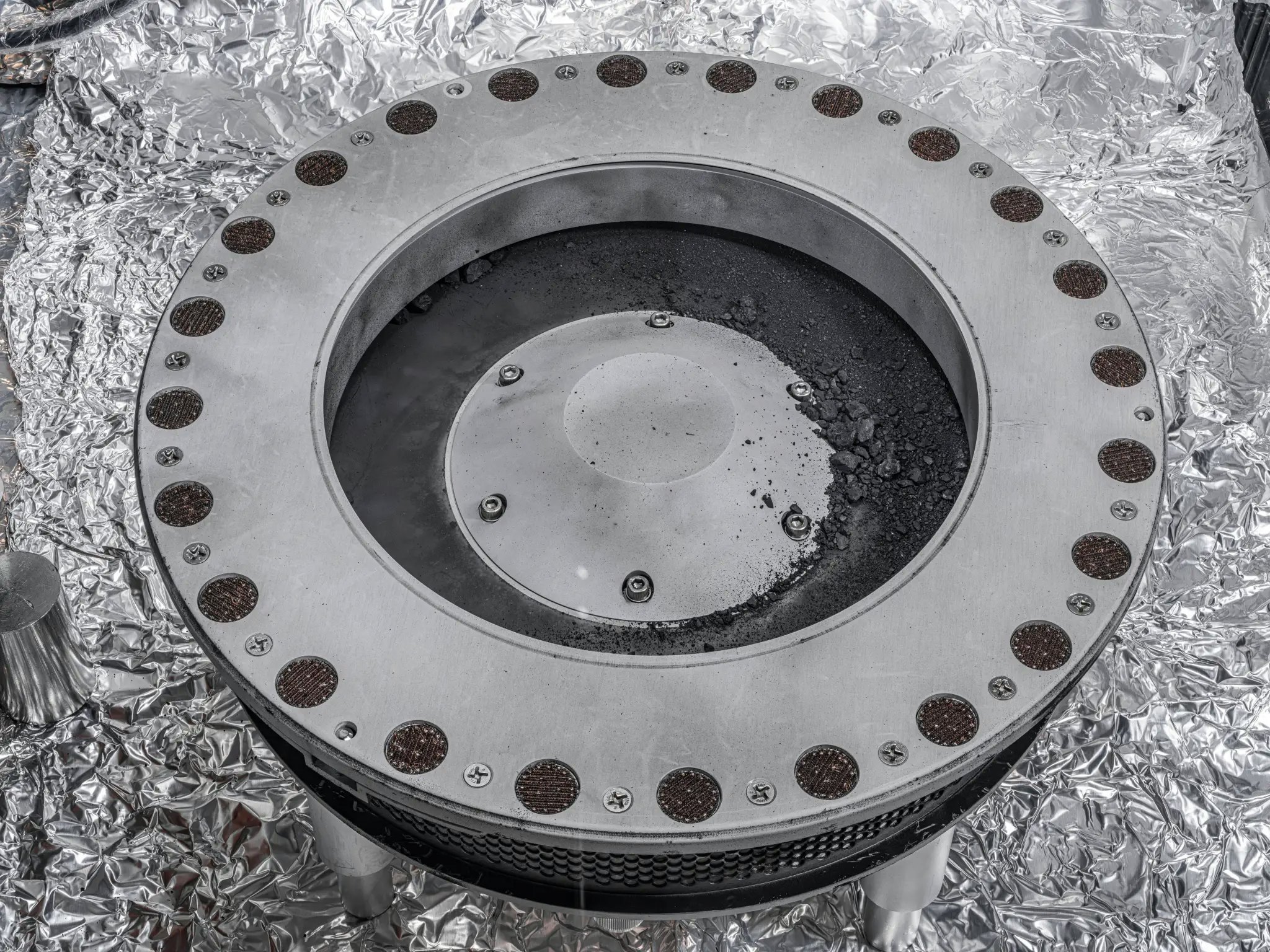
For the first time, NASA has revealed images and footage of the samples it grabbed from an asteroid.
In a public broadcast, space agency officials unveiled the first images of the dark, carbon-rich material from asteroid Bennu. The dust and rocks are a time capsule containing secrets about the origins of life and the evolution of the Solar System.
The literally out-of-this-world material, which is currently housed at NASA’s Johnson Space Center in Houston, traveled to Earth onboard OSIRIS-REx, or the Origins, Spectral Interpretation, Resource Identification, and Security–Regolith Explorer. The mission dropped off its sample capsule over the Utah desert on September 24, making this the first time that NASA has retrieved samples from an asteroid. Asteroid Bennu, the target of OSIRIS-REx, now joins a rocky pantheon with asteroids Itokawa and Ryugu, which Japan sampled during its Hayabusa and Hayabusa2 missions, respectively.

“We picked the right asteroid”
OSIRIS-REx began its journey of a billion miles to and from Bennu in 2016. Its quest to deliver material from the asteroid was successful and is now allowing scientists from laboratories around the world to take up-close analyses of pristine, 4.5-billion-year-old leftovers from the formation of the Solar System.
Initial studies reveal that the material shows evidence of water, as well as a high carbon content. “The building blocks of life on Earth may be found in the rock,” NASA officials shared in a statement published Wednesday.
“We picked the right asteroid, and not only that, we brought back the right sample. This is an astrobiologist’s dream. Just can’t wait to get at it. This material will be around for generations. We’re going to learn so much about the origins of the Solar System, its evolution, and potentially how life got started on Earth,” Daniel Glavin, OSIRIS RE-x sample analyst, said during the NASA event.
What happens next to the samples?
The sample’s permanent home is the OSIRIS-REx curation clean room in Houston. Personnel will continue to take apart the capsule, called TAGSAM, short for Touch and Go Sample Acquisition Mechanism. As they take parts off, they’ll distribute the samples into triangular, “deep dish pizza” shaped handling trays, according to Nicole Lunning, the OSIRIS-REx lead curator. Then in about six months, they’ll release a sample catalogue to give interested laboratories enough information to decide what research they’d like to conduct.
Over the next two years, roughly 230 scientists across different laboratories will “intensely work” on the samples, Lunning said.
“We’ll also have three samples go to museums in the next couple of months, so folks at home may have the opportunity to go and see the sample themselves,” she added.
If you want to see Bennu material yourself, look for the asteroid samples soon at the Smithsonian in Washington D.C., the University of Arizona Museum in Tucson, or the Space Center Houston in Texas.







